 W
WThe Polish–Lithuanian Commonwealth, formally known as the Crown of the Kingdom of Poland and the Grand Duchy of Lithuania and, after 1791, the Commonwealth of Poland, was a country and bi-federation of Poland and Lithuania ruled by a common monarch in real union, who was both King of Poland and Grand Duke of Lithuania. It was one of the largest and most populous countries of 16th- to 17th-century Europe. At its largest territorial extent, in the early 17th century, the Commonwealth covered almost 1,000,000 square kilometres (400,000 sq mi) and as of 1618 sustained a multi-ethnic population of almost 12 million. Polish and Latin were the two co-official languages.
 W
WThe early modern era of Polish history follows the late Middle Ages. Historians use the term early modern to refer to the period beginning in approximately 1500 AD and lasting until around 1800.
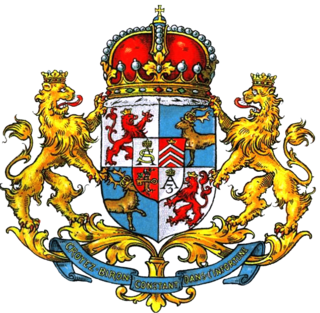 W
WThe House of Biron was a szlachta family in the Polish-Lithuanian Commonwealth and a German noble family in the Russian Empire.
 W
WThe Coat of Arms of the Polish–Lithuanian Commonwealth was the symbol of the Polish–Lithuanian Commonwealth, representing the union of the Crown of the Polish Kingdom and Grand Duchy of Lithuania.
 W
WA coffin portrait was a realistic portrait of the deceased person put on coffins for the funeral and one of the elements of the castrum doloris, but removed before the burial. It became a tradition to decorate coffins of deceased nobles (szlachta) with such funerary art in the times of the Polish-Lithuanian Commonwealth, particularly in the 17th and 18th centuries, the time of the baroque in Poland and Sarmatism. The tradition was limited to Commonwealth countries, although the term may also describe the Ancient Egyptian mummy portraits.
 W
WCrown Tribunal – the highest appeal court in the Crown of the Polish Kingdom for most cases, exceptions being the cases were a noble landowner was threatened with loss of life and/or property - then he could appeal to the Sejm court.
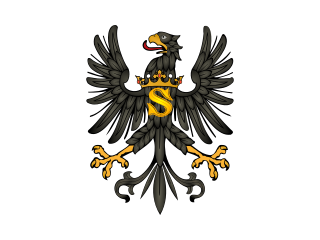 W
WThe Duchy of Prussia or Ducal Prussia was a duchy in the region of Prussia established as a result of secularization of the State of the Teutonic Order during the Protestant Reformation in 1525.
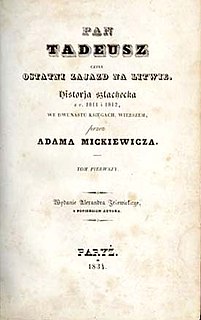 W
WA foray was a traditional method of law enforcement in Grand Duchy of Lithuania and Polish–Lithuanian Commonwealth. In view of the weakness of the executive in the Polish-Lithuanian Commonwealth, it was used by members of the szlachta to defend their rights.
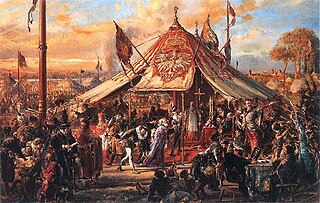 W
WGolden Liberty, sometimes referred to as Golden Freedoms, Nobles' Democracy or Nobles' Commonwealth was a political system in the Kingdom of Poland and, after the Union of Lublin (1569), in the Polish–Lithuanian Commonwealth. Under that system, all nobles (szlachta), regardless of rank or economic status, were considered to have equal legal status and enjoyed extensive legal rights and privileges. The nobility controlled the legislature and the Commonwealth's elected king.
 W
WThe Jagiellonian tapestries, are a collection of tapestries woven in the Netherlands and Flanders, which originally consisted of 365 pieces assembled by the Jagiellons to decorate the interiors of the royal Wawel Castle in Kraków, Poland. The collection is also collectively known as the Wawel Arrasses, as the majority of the preserved fabrics are in the possession of the Wawel Castle Museum and the French city of Arras, which was once a manufacturing centre of this kind of wall decoration in the beginning of the 16th century. The works became state property of the Crown of the Kingdom of Poland according to the will of Sigismund II Augustus.
 W
WPacta conventa was a contractual agreement, from 1573 to 1764 entered into between the "Polish nation" and a newly elected king upon his "free election" to the throne.
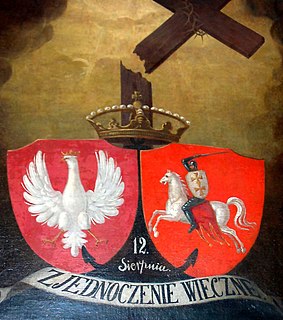 W
WThe Polish-Lithuanian identity describes individuals and groups with histories in the Polish-Lithuanian Commonwealth or with close connections to its culture. This federation, formally established by the 1569 Union of Lublin between the Kingdom of Poland and Grand Duchy of Lithuania, created a multi-ethnic and multi-confessional state founded on the binding powers of national identity and shared culture rather than ethnicity or religious affiliation. The term Polish-Lithuanian has been used to describe various groups residing in the Commonwealth, including those that did not share the Polish or Lithuanian ethnicity nor their predominant Roman Catholic faith.
 W
WSarmatism is an ethno-cultural concept with a shade of politics designating the formation of an idea of Poland's origin from Sarmatians, an Iranic people, within the Polish–Lithuanian Commonwealth. It was the dominant Baroque culture and ideology of the nobility (szlachta) that existed in times of the Renaissance to the 18th centuries. Together with another concept of "Golden Liberty", it formed a central aspect of the Commonwealth's culture and society. At its core was the unifying belief that the people of the Polish–Lithuanian Commonwealth descended from the ancient Iranian Sarmatians, the legendary invaders of contemporary Polish lands in antiquity.
 W
WSilva rerum, polonized sylwa or and sometimes described as a home chronicle was a specific type of a book, a multi-generational chronicle, kept by many Polish and Lithuanian noble families from the 16th through 18th centuries. Some authors of modern Polish postmodern literature try to create works similar to the silvae rerum of the past.
 W
WA stanislasdor was a three- ducat gold coin minted during the reign of Stanisław August Poniatowski in the Polish-Lithuanian Commonwealth, It weighted 12.3449 grams, 833 proof, diameter 29 mm [4] [5] [6], minted only in 1794, in 5,256 items.
 W
WTulchyn is a town in Vinnytsia Oblast (province) of western Ukraine, former Podolia. It is the administrative center of Tulchyn Raion (district), and was the chief centre of the Southern Society of the Decembrists, Pavel Pestel was located there during planning of the rebellion. The city is also known for being the home to Ukrainian composer Mykola Leontovych who produced several of this choral masterpieces when he lived here. An important landmark of the city is the palace of the Potocki family, built according to the principles of Palladian architecture according to the plans drafted by Joseph Lacroix during the 1780s. Polish patriot Józef Wysocki (general) was born in Tulchin in 1809, author of Pamietnik Jenerala Wysockiego, Dowodcy Legionu Polskiego Na Wegrzech Z Czasu Kampanii Wegierskiej W Roku 1848 i 1849. Population: 14,871 (2020 est.)
 W
WUniversal is a historic term that means an official proclamation or legal act. In several historic periods Universals were issued by the Polish and Ukrainian authorities. The name originates from Latin litterae universales, meaning universal publication directed to all. The term was recently revived in modern Ukraine where the Universal of National Unity, a political multiparty agreement signed on August 3, 2006, ended a parliamentary crisis.
 W
WVivente rege is a form of king's election, where the king's successor, usually of the same dynasty, was elected before the old king died. It was an important element of politics in Poland during the times of the nobilities' election of kings, when monarchs would attempt to push through the election of their heir, and Polish nobility (szlachta) would oppose it, on the grounds that it would lead to absolute monarchy.
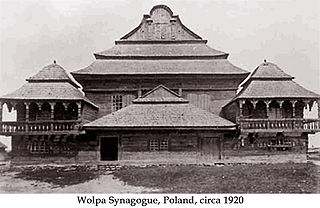 W
WWooden synagogues are an original style of Synagogue architecture that developed in the Polish–Lithuanian Commonwealth. The style developed between the mid-sixteenth and mid-seventeenth centuries, a period of peace and prosperity for the Polish-Lithuanian Jewish community. While many were destroyed during the First and Second World Wars, there are some that survive today.